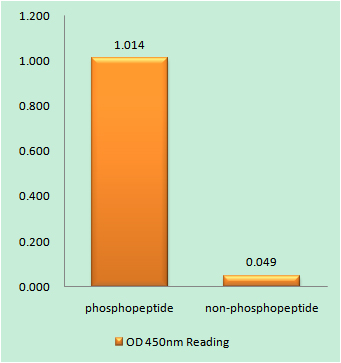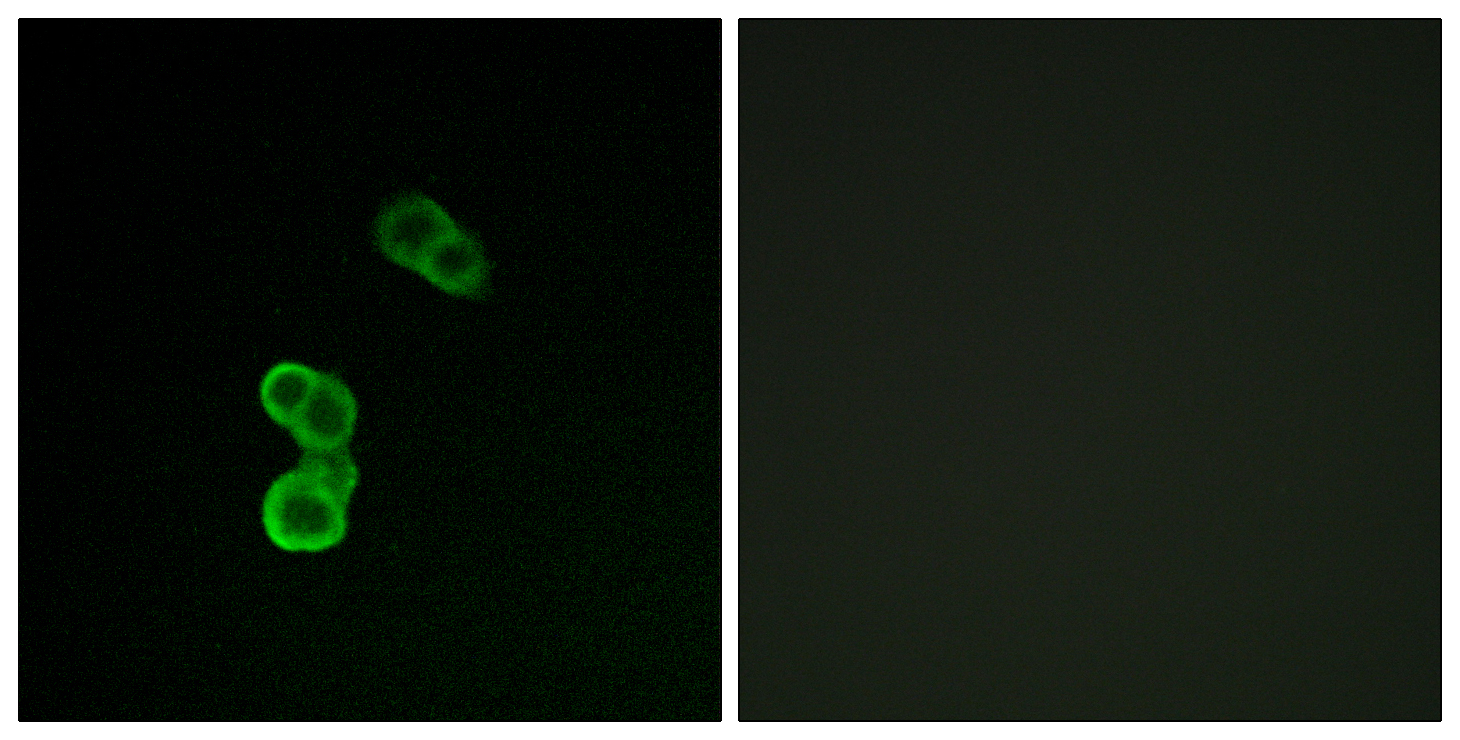GAP-43 (phospho Ser41) Polyclonal Antibody
- Catalog No.:YP0119
- Applications:IF;ELISA
- Reactivity:Human;Mouse;Rat
- Target:
- GAP-43
- Gene Name:
- GAP43
- Protein Name:
- Neuromodulin
- Human Gene Id:
- 2596
- Human Swiss Prot No:
- P17677
- Mouse Gene Id:
- 14432
- Mouse Swiss Prot No:
- P06837
- Rat Gene Id:
- 29423
- Rat Swiss Prot No:
- P07936
- Immunogen:
- The antiserum was produced against synthesized peptide derived from human GAP43 around the phosphorylation site of Ser41. AA range:8-57
- Specificity:
- Phospho-GAP-43 (S41) Polyclonal Antibody detects endogenous levels of GAP-43 protein only when phosphorylated at S41.
- Formulation:
- Liquid in PBS containing 50% glycerol, 0.5% BSA and 0.02% sodium azide.
- Source:
- Polyclonal, Rabbit,IgG
- Dilution:
- IF 1:200 - 1:1000. ELISA: 1:20000. Not yet tested in other applications.
- Purification:
- The antibody was affinity-purified from rabbit antiserum by affinity-chromatography using epitope-specific immunogen.
- Concentration:
- 1 mg/ml
- Storage Stability:
- -15°C to -25°C/1 year(Do not lower than -25°C)
- Other Name:
- GAP43;Neuromodulin;Axonal membrane protein GAP-43;Growth-associated protein 43;Neural phosphoprotein B-50;pp46
- Molecular Weight(Da):
- 25kD
- Background:
- The protein encoded by this gene has been termed a 'growth' or 'plasticity' protein because it is expressed at high levels in neuronal growth cones during development and axonal regeneration. This protein is considered a crucial component of an effective regenerative response in the nervous system. Alternatively spliced transcript variants encoding distinct isoforms have been found for this gene. [provided by RefSeq, Jul 2008],
- Function:
- function:This protein is associated with nerve growth. It is a major component of the motile "growth cones" that form the tips of elongating axons.,online information:Gap-43 entry,PTM:Phosphorylation of this protein by a protein kinase C is specifically correlated with certain forms of synaptic plasticity.,similarity:Belongs to the neuromodulin family.,similarity:Contains 1 IQ domain.,subcellular location:Cytoplasmic surface of growth cone and synaptic plasma membranes.,subunit:Binds calmodulin with a greater affinity in the absence of Ca(2+) than in its presence.,
- Subcellular Location:
- Cell membrane ; Peripheral membrane protein ; Cytoplasmic side . Cell projection, growth cone membrane ; Peripheral membrane protein ; Cytoplasmic side . Cell junction, synapse . Cell projection, filopodium membrane ; Peripheral membrane protein . Perikaryon . Cell projection, dendrite . Cell projection, axon . Cytoplasm . Cytoplasmic surface of growth cone and synaptic plasma membranes. .
- Expression:
- Alzheimer cortex,Brain,Subthalamic nucleus,
- June 19-2018
- WESTERN IMMUNOBLOTTING PROTOCOL
- June 19-2018
- IMMUNOHISTOCHEMISTRY-PARAFFIN PROTOCOL
- June 19-2018
- IMMUNOFLUORESCENCE PROTOCOL
- September 08-2020
- FLOW-CYTOMEYRT-PROTOCOL
- May 20-2022
- Cell-Based ELISA│解您多样本WB检测之困扰
- July 13-2018
- CELL-BASED-ELISA-PROTOCOL-FOR-ACETYL-PROTEIN
- July 13-2018
- CELL-BASED-ELISA-PROTOCOL-FOR-PHOSPHO-PROTEIN
- July 13-2018
- Antibody-FAQs
- Products Images

- Enzyme-Linked Immunosorbent Assay (Phospho-ELISA) for Immunogen Phosphopeptide (Phospho-left) and Non-Phosphopeptide (Phospho-right), using GAP43 (Phospho-Ser41) Antibody

- Immunofluorescence analysis of MCF-7 cells, using GAP43 (Phospho-Ser41) Antibody. The picture on the right is blocked with the phospho peptide.



